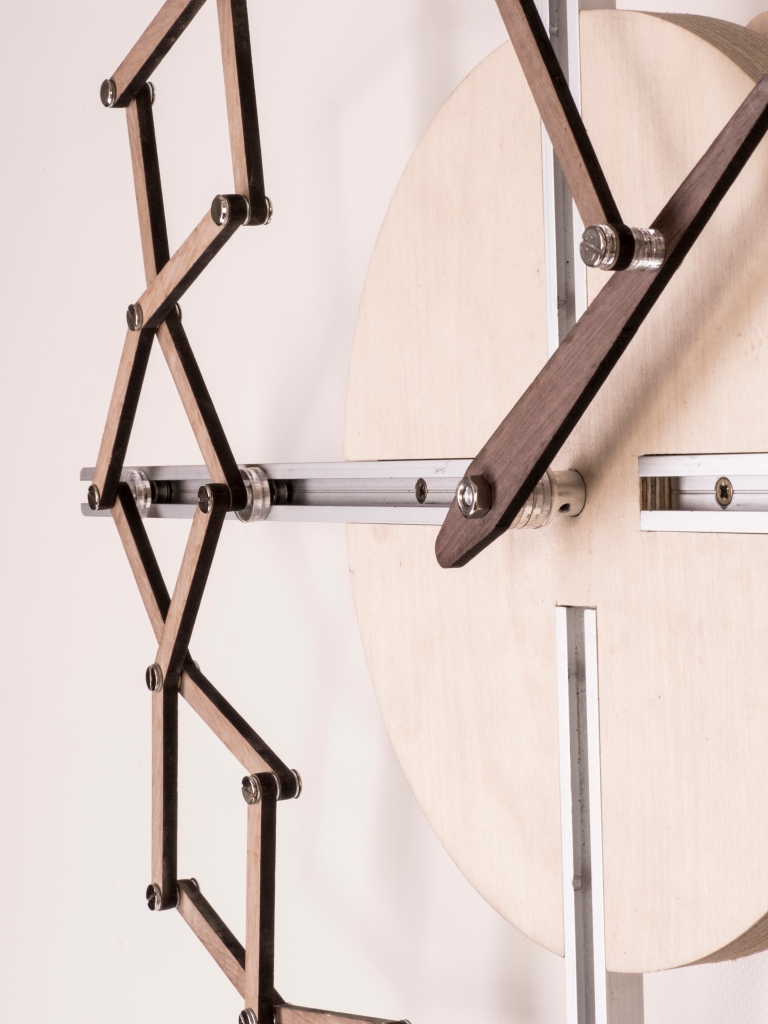Matt Gilbert has been a Machines Room member for quite a while now, and we were very excited to have him join Cohort, Machines Room’s pre-incubator and professional development programme. We caught up with him about how Cohort is treating him and what’s in store for his design studio Animaro.
Can you tell us a bit about your background as a maker, your practice and areas of interest?
I trained as an architect in Copenhagen, where I became interested in mechanical and kinetic structures. My thesis project was a collapsible theatre structure which would fill empty plots in the city. While in Copenhagen I also became interested in furniture design and making in general. Since my studies I have worked at Heatherwick studio in London and developed skills in project management and realising complex structures. I now have a company Animaro, where I combine art and engineering to create innovative pieces of furniture for the home. By combining moving parts, springs and pulleys I seek to give playful clues about the physical forces at work around us such as gravity and friction.
What you’ve been working on, and what you will be working on, during Cohort?
I launched a lamp on kickstarter called the Crane Lamp in August 2017. I had 50 orders from this campaign, and these have now been built and shipped. I am now working on sales and marketing for the lamp to continue sales and production in a small and sustainable way. I am simultaneously developing a moving clock which I would like to launch at a trade fair called Pulse in May 2018.
Does having access to the machines, expertise and community at Machines Room influence your work and practice?
Machines Room has been and is, crucial to my practice. In order to quickly develop ideas I need access to a CNC machine, lasercutter, 3D printer and assembly space. The combination of these machines allows me prototype ideas quite thoroughly before outsourcing parts to manufacturers. Without these machines I would waste time and money on paying to get a lot of things wrong. I would probably be far more cautious and slow and projects would likely not get off the ground. Furthermore I regularly take advice (and give advice) to other members about areas I am not so knowledgeable about!
What are you finding most challenging?
I find sales and marketing the most challenging. These are my weaknesses and the areas that I need to improve (or find a co-founder that covers this). Dealing with cashflow as a small business I also find challenging – I often have to place larger material orders or pay VAT bills and need to know a few months in advance that I will have enough money in the business. I understand that this is something every business deals with and I will improve at this over time.
What has been the highlight of your Cohort experience so far?
Getting a new desk on wheels! I like the new seating layout of Cohort. I have been a member of Machines Room for a long time but the Cohort has really formalised the relationship between long-standing members of Machines Room.
What is next for you after Cohort? Are you planning to continue this stream of work or start a new project?
After launching the clock I want to build a small team to help manage logistics and sales of the clock and lamp. Then I’ll start working on a new project, possibly an Orrery.



